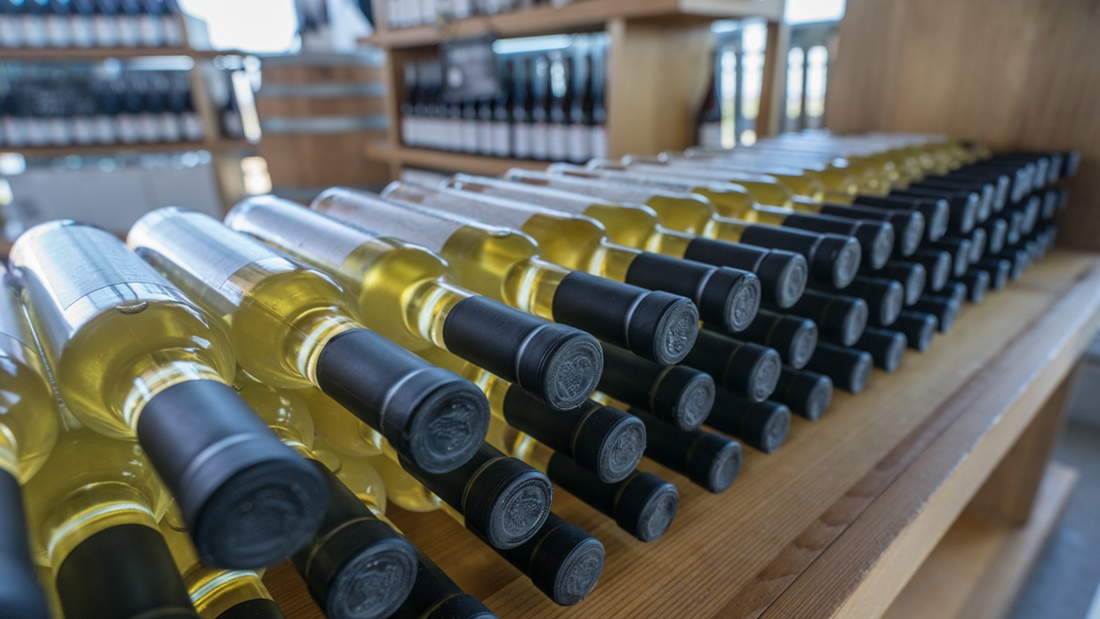
24 Nov What is Ice Wine?
While wine lovers may be familiar with what Ice Wines are, if you have just developed a taste for wines, you may not be aware of what these are or how they are made. In this article we take a look at what Ice Wine is, how it’s produced and what its unique attributes are.
Ice wine is an intense, super-sweet, super-rich dessert wine made from naturally-frozen grapes. Traditionally ice wine making is firmly entrenched in Austria as well as in Germany where it is locally called “eiswein”. However, when people talk about Ice Wine, they are generally referring to the wines that come from Ontario and British Columbia in Canada.
Ice Wine history
The story goes that a German winemaker discovered Ice Wine; the legend is that he was away from his vineyards during the harvesting season and by the time he returned, all the grapes there had become frozen on the vines. This didn’t deter him from harvesting the grapes as normal anyway and he also continued with pressing the grapes for fermentation; and that is how the first eiswein came into existence.
Ice wine – The production process
Ice wine is made from the grapes that have been left to freeze on the vines, dramatically intensifying the flavour profile and concentrating its sugars. The picked frozen fruit is then pressed, squeezing out all the drops of juice before running them through the fermentation process. People most often confuse the ice wine vinification process with noble rot/botrytis (associated with producing the most sought-after dessert wines in the world). However, Ice Wine shouldn’t be affected by botrytis before being frozen.
The grapes used in making Ice Wine
Most Ice Wines are made from a combination of Riesling, Vidal, Cabernet Franc and Gewurztraminer. The grapes that have higher acidity levels is what make the wines refreshingly light and they have none of the stickiness or heaviness that many other fine wines have. However, many renowned winemakers experiment with different grapes in different regions to discover new twists and stretch the limits of this unique form of wine.
Ice wine – The styles and flavours
Most ice wines have a medium to full-bodied style and the commonly found aromas in these wines lean towards stone fruits; the aromatic character of wines made from white grapes has prominent peach and apricot flavourings. Many Ice Wines also have distinctive honey-like nuances, exotic flavours of tropical mango and a replay of stone fruits we just mentioned. The red Ice Wines lean more towards candied red fruit and strawberry profiles with a hint of sweet spicy aroma woven into them.
The alcohol levels
Like most other dessert wines, Ice Wine alcohol levels lie on the lower end of this scale. Their average alcohol lies in the 7-12% range, with Ice Wines from Germany coming in far lower than their Canadian counterparts overall.
The pricing
Because frozen grapes generally yield much smaller quantities of juice, the overall production levels of ice wines are significantly lower than that of most table wines, and are typically generally in the range of 10-12%; it’s why genuine ice wines are almost always pricier than any average table wine.
Inniskillin the Canadian company is undoubtedly the most renowned Ice wine producer. They have built a solid reputation of surprisingly accessible yet quality-driven Ice wines. For any more information on Ice Wines or custom wine cellar design and installation, you can call Signature Cellars on 02 9340 7515 or use this contact form to get in touch with us. We’ll be pleased to assist you and provide custom solutions that match your requirements.
Thanks for reading,
Neil Smallman
Signature Cellars
1300 570 636




No Comments